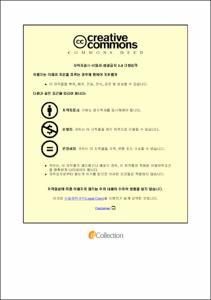Distribution of Artisanal Smoked Fish Products in the Gambia
- Abstract
- The artisanal fisheries sector in the Gambia is the major producer of cured fish. About 60% is marketed as smoked or dried. Fish is the affordable source of animal protein in most parts of country. Traditional processing of fish in the Gambia is a reliable means of extending its shelf life hence making it available to consumers living in rural areas. Post-harvest losses are estimated at 20-30%. The market for smoked fish is expanding, although inadequate market information and low level of organization among producers and traders limit the efficiency of the trade. In this study, an overview of distribution of artisanal smoked fish products in the Gambia was presented using four approaches. First, an overview of the national fisheries policy objectives by looking at some of the programs and strategies put in place by the government. Further, description of the resource potentials, characteristics of the fisheries, and the production were discussed. Attempts were also made to determine the importance and contribution of the fisheries sector to the national economy. The first approach focused on the capacity to generate employment, foreign exchange, fish protein for local consumption, and over all, the contribution of the fisheries sector to Gross Domestic Product (GDP). Secondly, the various products, processing technology and the gender pattern of the fisheries sector, were explored highlighting their strengths and weaknesses. A few case studies were given as an illustration. Thirdly, an overview of marketing and distribution of fish and fish products, including fish handling, diaspora trade, organizational structure and strategy of the cured fish industry was examined. Lastly, study gives an overview of the sociocultural dimensions of the fish marketing. The family relations, expectations, the ethnicities of the fishing families, the conjugal relations and the expectations from the society, importance of family members, their believes and customs, and role specialization within the fishing families were highlighted.
- Issued Date
- 2016
- Awarded Date
- 2016. 2
- Type
- Dissertation
- Publisher
- 부경대학교 대학원
- Affiliation
- 해양수산경영학과
- Department
- 대학원 해양수산경영학과
- Advisor
- 장영수
- Table Of Contents
- I . Introduction 1
II . Fisheries in the Gambia 3
1. General background 3
2. The resource base 6
3. The structure of fisheries sector 9
4. Production trends 16
5. Export of fish and fishery products 18
6. Contribution of fisheries to the national economy 20
7. Key elements of the policy environment 21
III . Products, Processing Technology and Gender Role 27
1. Fish smoking equipment 28
2. Cold-smoked products 29
3. Hot-smoked products 31
4. Dried fish products 34
IV . Marketing and Distribution of Fish and
Fisheries products 37
1. Fish handling 37
2. Fresh fish marketing and distribution 38
3. Cured fish marketing and distribution 40
4. The diaspora trade 53
5. Organizational structure and strategy of the cured fish
industry 55
V . Socio-Cultural Dimension of Fish Marketing 57
1. The ethnicities of the fishing families 57
2. Conjugal relation and expectation 58
3. Importance of children in the fishing families 58
4. Relation between the “banabana” and fishermen 58
5. Women as “banabana” and their relationship with
the fishermen 59
6. Men as “banabana” and their relation to fishermen 59
VI . Conclusion and proposals for development action 61
References 68
- Degree
- Master
- Files in This Item:
-
-
Download
 Distribution of Artisanal Smoked Fish Products in the Gambia.pdf
기타 데이터 / 4.69 MB / Adobe PDF
Distribution of Artisanal Smoked Fish Products in the Gambia.pdf
기타 데이터 / 4.69 MB / Adobe PDF
-
Items in Repository are protected by copyright, with all rights reserved, unless otherwise indicated.